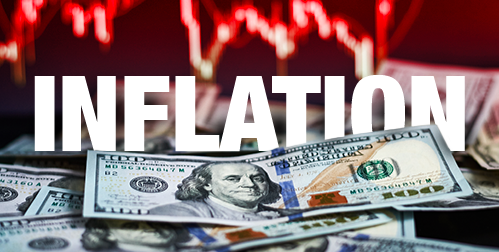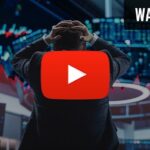Record Setting Inflation
Data from the U.S. Bureau of Labor Statistics shows that prices are rising at the fastest pace in 40 years. The increase was higher than any Wall Street estimate. They rose 7.5% for the 12 months ending in January. That was the largest 12-month increase since February 1982. For those of us who can remember – the country was in the iron grip of a recession at the time.1
The price increases were across the board. Energy prices were up 27%. Gasoline, on average, costs 40% more than it did last year. Food prices also climbed 7% higher over the year. New car prices are up 12%. But used car and truck prices are up a shocking 40%.2
This rapid rise indicates a worsening outlook for inflation and cements the chances of huge interest rate hikes this year.
As recently as December, the Fed was forecasting just three quarter-point rate increases this year. The market is now anticipating six. There is a high chance of a half-point rate hike in March. This would be the first increase of that magnitude since May 2000. Wall Street figures the Fed to hike rates at least five more times after that before the end of 2022.
Effects on Labor and the Stock Market
The tightest labor market in years is fueling rapid wage gains for most workers. The only problem is that red-hot inflation is quickly erasing all those increases. The Labor Department reported that average hourly earnings for all employees actually declined 1.7% in January from the same month last year. The typical U.S. worker is actually worse off today than they were a year ago.3
Stock market prices plunged after the most recent inflation report. The S&P 500 Index quickly fell 1%. Rate-sensitive tech stocks were hit especially hard. Analyst fears about rising interest rates are sending them running from securities.
With no end in sight, U.S. inflation has yet to hit its peak. Americans tired of paying higher prices for pretty much everything shouldn’t expect help anytime soon from the Federal Reserve. It could take a year before inflation fighting efforts really have any effect.
Policymakers tried to pass off inflation as a ‘transitory’. But price increases have proven more aggressive and durable than they anticipated. The problem is that this is not your typical inflation caused by big jumps in credit.
Instead, much of the current situation has come from unprecedented spending by the federal government on pandemic-related payments to households. As well as from the Fed pumping money into the economy through lending programs and near-zero short-term interest rates.
The Federal Reserve is now in a no-win situation. The only way for them to get inflation under control is to cause a sharp slowdown in the economy. Perhaps even force a recession. This would be the hard landing that policy makers have wanted to avoid.
We must hope that the Fed’s cure isn’t worse than the disease. That its inflation-fighting rate increases don’t send the economy reeling and hurt the people at the lower end of the income spectrum that the aggressive spending policies were aimed at helping.
The one calm spot in this storm are precious metals. In the middle of all this mismanagement, they have been setting record prices. Investors are flocking to them because they are a proven safe haven in these troubled times. Call American Hartford Gold at 800-462-0071; we can help.
Notes:
1. https://www.10news.com/inflation-biggest-single-year-jump-since-1982/
2. https://www.10news.com/inflation-biggest-single-year-jump-since-1982/
3. https://www.foxbusiness.com/economy/hottest-inflation-in-40-years-eating-away-at-americans-wage-gains






